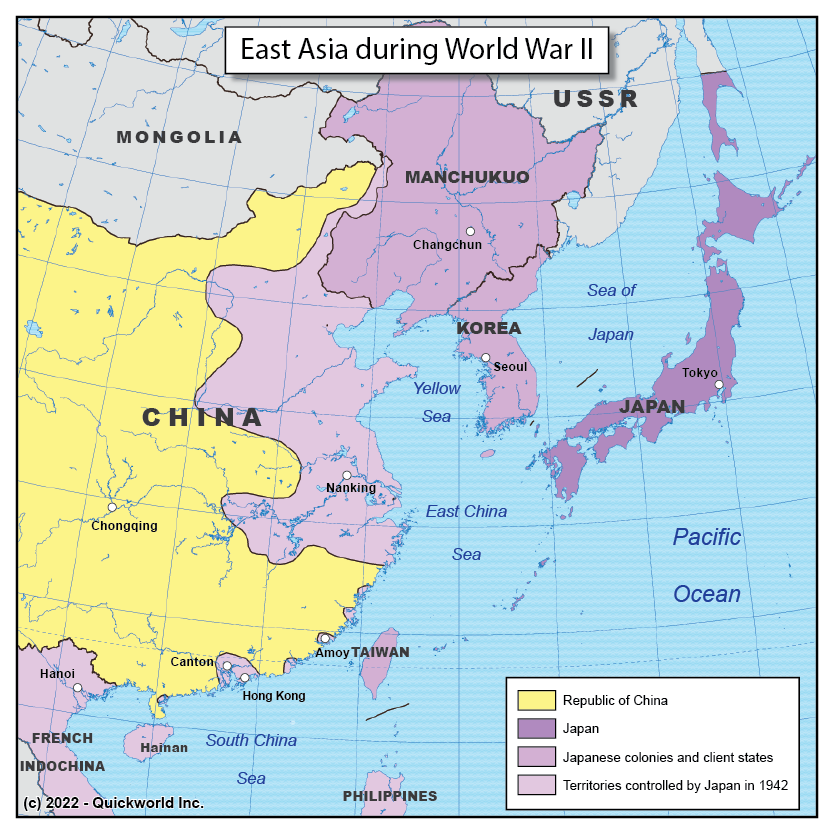Eastern Asia was one of the main theatres of World War II. While Europeans tend to consider the start of the War to be the 1939 invasion of Poland by Germany, Japanese expansionism throughout Eastern Asia and the Pacific had started much earlier.
Japan annexed Taiwan in 1895, then Korea in 1910, and finally favored the secession of Manchuria from China in 1931 with the creation of the puppet state of Manchukuo. After a border incident, Japan started a full-scale invasion of China in 1937, the beginning of a war that would become part of the global conflict once all major powers took sides.
As this map shows, Japan enjoyed much military success in northeastern China, controlling the regions around Beijing and Nanjing/Shanghai, but their progression to the West and South was stopped by the fierce resistance of the Republic of China's two main factions: the Nationalists and the Communists. Japan only ever controlled a few coastal pockets, and was never able to link its Eastern possessions to the lands it controlled directly or indirectly in Southeast Asia.
The collapse of the Japanese Empire in the Summer of 1945 allowed China to be reunited once again, only to fall into a civil war between Communists and Nationalists, which would last another four years.
World War II in East Asia


